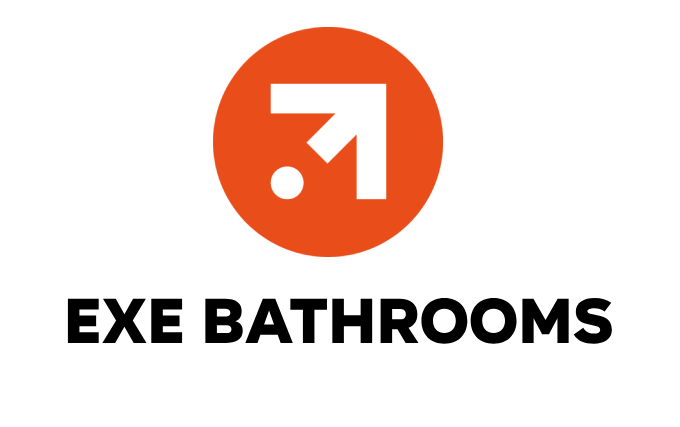- 01392 920142
- 07712398696
- info@exebathrooms.co.uk
- Unit 1, Rosamond Farm, Perkin's Village, Exeter EX5 2JG
Imagine stepping out of the shower on a chilly morning and feeling a warm, toasty floor beneath your feet. That’s the luxury of underfloor heating (UFH)—a modern heating solution that is becoming increasingly popular in UK homes.
Traditional radiators can leave cold spots, but underfloor heating distributes warmth evenly, making your bathroom a cosy retreat. Not only does it enhance comfort, but it also improves energy efficiency and frees up wall space for a sleeker design.
In this article, we’ll explore the many benefits of underfloor heating in your bathroom, helping you decide whether it’s the right upgrade for your home.
Underfloor heating is a heating system installed beneath the floor to provide consistent warmth. Unlike radiators that heat the air unevenly, UFH works by radiating heat from the ground up, creating a comfortable and even temperature.
There are two main types of underfloor heating systems:
Electric underfloor heating (dry system)
Water-based underfloor heating (wet system)
Both systems work well under various flooring types, but some materials (such as tiles) conduct heat better than others.
One of the biggest advantages of UFH is the unmatched comfort it provides. No more stepping onto ice-cold tiles in the morning—your entire bathroom floor stays warm and inviting.
Unlike radiators, which create uneven heating, UFH ensures a consistent temperature across the entire room. This makes your bathroom feel cosier and more luxurious, no matter the season.
Many homeowners worry about energy bills, but UFH can be more energy-efficient than traditional radiators. Here’s why:
✅ Lower temperature, same warmth – UFH operates at lower temperatures (around 35°C) compared to radiators (60-70°C) while still effectively heating the space.
✅ Better heat retention – The floor acts as a heat store, keeping the bathroom warmer for longer.
✅ Reduced heat loss – With good insulation, UFH minimises wasted energy, cutting down on heating costs over time.
Radiators can take up valuable wall space, limiting your bathroom layout. With UFH, you gain more design freedom to create a sleek and open space.
🔹 No need to position furniture around radiators.
🔹 Ideal for modern, minimalist bathrooms.
🔹 Provides more room for storage or decorative elements.
Bathrooms are prone to dampness, mould, and mildew, but underfloor heating helps combat these issues by:
🔹 Keeping floors dry, reducing the chance of mould growth.
🔹 Limiting dust circulation (unlike radiators, which move dust particles around).
🔹 Creating a cleaner environment, especially beneficial for allergy sufferers.
If you’re looking for eco-friendly heating solutions, UFH is a great choice. It works well with:
✅ Air source and ground source heat pumps – Reducing reliance on fossil fuels.
✅ Solar panels – Lowering carbon footprint and energy costs.
Many UK homeowners are switching to renewable energy sources, making UFH a future-proof investment.
Many people assume UFH is expensive, but the cost depends on system type, bathroom size, and energy usage.
💰 Electric UFH: £75 – £100 per square metre (DIY-friendly, lower upfront cost).
💰 Water UFH: £100 – £150 per square metre (higher upfront cost, but cheaper to run long-term).
🔹 Electric UFH costs around £10-£20 per month for a small bathroom.
🔹 Water UFH is cheaper to run, especially when paired with energy-efficient boilers or heat pumps.
✅ Tip: Use a programmable thermostat to optimise heating times and save energy!
Wondering what installing UFH involves? Here’s a step-by-step overview:
1️⃣ Floor Preparation – Removing old flooring and ensuring a flat surface.
2️⃣ Laying Insulation – To improve heat retention.
3️⃣ Installing Heating System – Placing electric mats or water pipes.
4️⃣ Floor Covering Installation – Tiles, vinyl, or engineered wood.
5️⃣ Connecting Thermostat & Testing – Ensuring everything functions properly.
✔️ Electric UFH is easier to install DIY.
✔️ Water UFH requires professional fitting due to plumbing work.
When selecting UFH, consider:
🏡 Bathroom size – Electric is better for small spaces; water is ideal for larger areas.
💰 Budget – Electric is cheaper upfront; water is cost-effective long-term.
🌿 Energy efficiency – Water UFH works best with heat pumps for eco-friendly heating.
🛠 Flooring type – Tiles conduct heat best, but vinyl and engineered wood are also good options.
🔸 “UFH is too expensive to run” – It’s often cheaper than radiators with good insulation.
🔸 “It takes too long to heat up” – With proper insulation and thermostatic control, heat-up time is minimal.
🔸 “It’s not suitable for small bathrooms” – Electric UFH works perfectly in compact spaces.
One of the perks of UFH is its low maintenance requirements.
✅ Electric UFH: No moving parts = minimal upkeep.
✅ Water UFH: Occasional system checks ensure efficiency.
With proper installation, UFH systems can last 20+ years, making them a reliable long-term investment.
Switching to UFH helps reduce carbon emissions by:
🌍 Using lower temperatures to maintain warmth.
🌍 Working efficiently with renewable energy sources.
🌍 Eliminating bulky radiators, reducing energy waste.
Underfloor heating is a game-changer for UK bathrooms, offering:
✔️ Unmatched comfort and luxury.
✔️ Energy efficiency with potential cost savings.
✔️ A sleek, clutter-free design.
✔️ Improved hygiene by reducing dampness and dust circulation.
✔️ Eco-friendly compatibility with renewable energy systems.
Whether you’re renovating or building a new bathroom, investing in underfloor heating is a smart move for warmth, efficiency, and style.

EXE Bathrooms specialises in designing and installing stunning, custom bathrooms across Exeter and Devon. We offer a complete service from design to supply and installation, ensuring a seamless process and exceptional results.